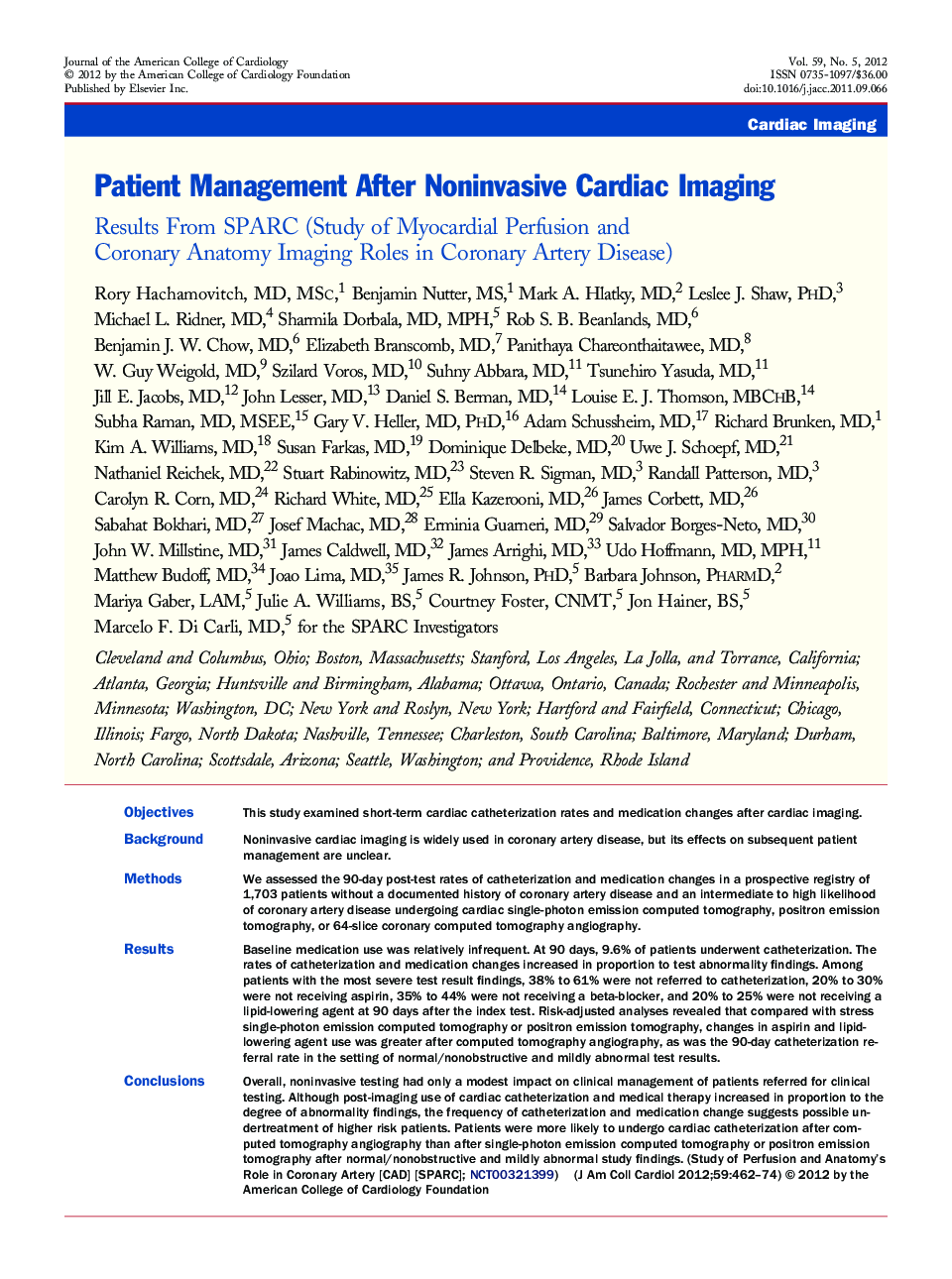| Article ID | Journal | Published Year | Pages | File Type |
|---|---|---|---|---|
| 2949323 | Journal of the American College of Cardiology | 2012 | 13 Pages |
ObjectivesThis study examined short-term cardiac catheterization rates and medication changes after cardiac imaging.BackgroundNoninvasive cardiac imaging is widely used in coronary artery disease, but its effects on subsequent patient management are unclear.MethodsWe assessed the 90-day post-test rates of catheterization and medication changes in a prospective registry of 1,703 patients without a documented history of coronary artery disease and an intermediate to high likelihood of coronary artery disease undergoing cardiac single-photon emission computed tomography, positron emission tomography, or 64-slice coronary computed tomography angiography.ResultsBaseline medication use was relatively infrequent. At 90 days, 9.6% of patients underwent catheterization. The rates of catheterization and medication changes increased in proportion to test abnormality findings. Among patients with the most severe test result findings, 38% to 61% were not referred to catheterization, 20% to 30% were not receiving aspirin, 35% to 44% were not receiving a beta-blocker, and 20% to 25% were not receiving a lipid-lowering agent at 90 days after the index test. Risk-adjusted analyses revealed that compared with stress single-photon emission computed tomography or positron emission tomography, changes in aspirin and lipid-lowering agent use was greater after computed tomography angiography, as was the 90-day catheterization referral rate in the setting of normal/nonobstructive and mildly abnormal test results.ConclusionsOverall, noninvasive testing had only a modest impact on clinical management of patients referred for clinical testing. Although post-imaging use of cardiac catheterization and medical therapy increased in proportion to the degree of abnormality findings, the frequency of catheterization and medication change suggests possible undertreatment of higher risk patients. Patients were more likely to undergo cardiac catheterization after computed tomography angiography than after single-photon emission computed tomography or positron emission tomography after normal/nonobstructive and mildly abnormal study findings. (Study of Perfusion and Anatomy's Role in Coronary Artery [CAD] [SPARC]; NCT00321399)
